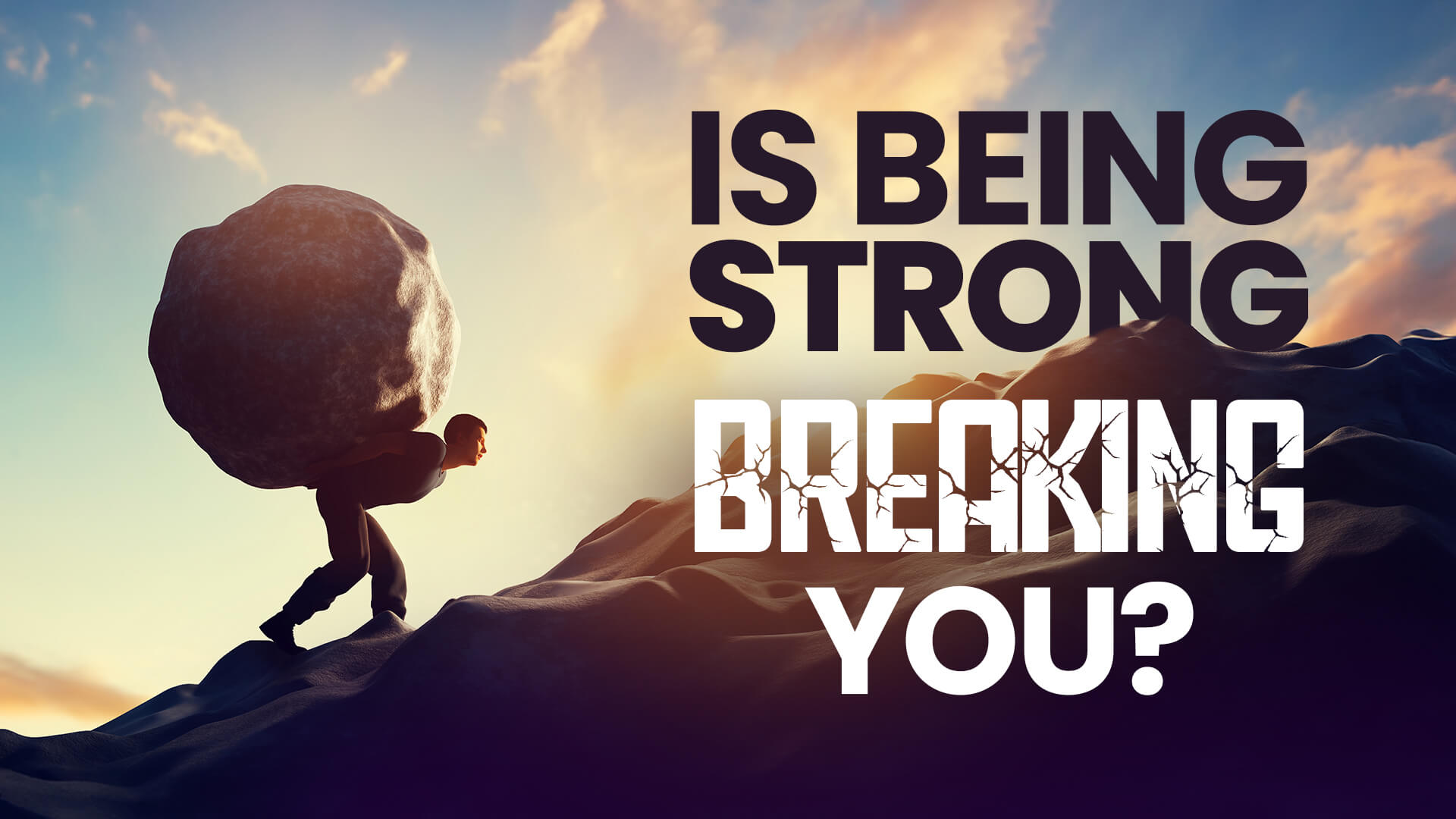How a trauma-informed approach in coaching bridges this gap.
Trauma is not only that unpleasant event that happened, but also the energy and emotion that stayed trapped inside because the body never had a chance (you probably never gave it a chance) to complete its natural stress cycle.
You can suppress a memory.
You can convince yourself that you have moved on.
It remembers every heartbeat that raced when you felt unsafe.
It remembers every word that cut you deeper.
It remembers every time you betrayed yourself to be loved.
It remembers the nights you smiled while quietly swallowing your pain.
It remembers the times you wanted to speak but chose silence to stay safe.
It remembers the weight of dreams you buried to meet others’ expectations.
It remembers how small you made yourself just to fit into spaces that never saw your worth.
Even when the mind forgets, the body keeps the score.
Because healing is not about thinking differently.
It begins when the body feels safe enough to release what it has been holding for years.
But your body knows.
The Memory Beneath the Skin
Every human carries invisible imprints of past experiences. Some are agonizingly empowering. Others, deeply wounding. The body records them all.
From a psychological lens, trauma is not only the event that happened but also the energy and emotion that stayed trapped inside because the body never had a chance to complete its natural stress cycle.
When a person experiences fear, shame, rejection, or abandonment, the body activates the survival system. The heartbeat quickens, muscles tighten, and stress hormones flood the bloodstream. In a healthy system, these responses eventually calm down. But when they remain stuck, the nervous system learns that survival is its default state.
Over time, this becomes a physical memory.
The body begins to anticipate threats even in safe situations.
The mind cannot remember why, but the body still reacts as if danger is near.
This is why people can achieve success yet feel anxious.
This is why love can feel unsafe even when it is healthy.
This is why you can forgive someone mentally but still tense up when you hear their name.
This is why you can be surrounded by people yet feel completely alone.
This is why rest can feel unbearable when your body has been trained to equate stillness with danger.
This is why compliments make you uncomfortable when your self-worth was built on criticism.
This is why opportunities can feel overwhelming when your nervous system still associates growth with risk.
The body never lies.
The Biology of Emotional Storage
Neuroscience now confirms what ancient wisdom always knew. Every emotion creates a biochemical imprint.
When you feel hurt, the body releases cortisol and adrenaline. When you feel loved, it releases oxytocin and serotonin. Over time, repeated emotional patterns create cellular memories.
These emotions are stored in the muscles, fascia, gut, and heart.
- – Chronic shoulder tension often reflects emotional burden.
- – Digestive issues reflect suppressed anxiety.
- – Tight jaws hold back words never spoken.
- – Lower back pain often carries the weight of financial fear and feeling unsupported.
- – Neck stiffness often represents the struggle of holding back words or resisting flexibility in perspective.
- – Tight hips often store grief, guilt, and unprocessed emotions around intimacy or vulnerability.
- – Chest heaviness often reflects heartbreak, sadness, or the emotional effort of holding everything together.
- – Chronic fatigue often reflects emotional exhaustion from years of being in survival mode.
So, when the mind insists, “I am fine,” but the body trembles, tightens, or feels heavy, the truth is clear. The mind may have moved on, but the body is still waiting to exhale.
Healing begins when awareness returns to the body.
The Nervous System’s Silent Cry
The nervous system is the bridge between mind and body. It is constantly scanning the environment for cues of safety or danger.
When trauma or emotional pain is unresolved, this system becomes dysregulated. It either stays stuck in overdrive, always ready to fight or flee, or it collapses into shutdown, numbness, and fatigue.
This dysregulation is not mere weakness. It is an adaptation. The body learned these patterns to keep you alive and functional (well, somewhat functional).
However, if not addressed, it becomes a barrier to growth.
You cannot truly expand while your body still believes it is in danger.
You cannot embody abundance while your biology is tuned to survival.
That is why nervous system regulation is not a luxury. It is the foundation of every transformation.
Why the Mind Alone Cannot Heal
The traditional self-help approach focuses on thoughts. “Think positive,” “shift your mindset,” “believe in yourself.” While helpful, this is only half the equation.
The subconscious mind does not respond to language. It responds to emotion, sensation, and energy.
If your body is flooded with stress chemistry, no amount of affirmations will convince it that you are safe. You can repeat “I am calm” all day, but if your breath is shallow and your chest is tight, the body still hears danger.
This is why many people struggle to sustain healing or success. They change their thoughts but never change their state.
A trauma-informed approach in coaching bridges this gap. It works not only with the conscious mind but with the nervous system and the emotional body. It helps you shift from cognitive awareness to embodied transformation.
The Language of the Body
The body communicates through sensations, not sentences. Every physical feeling is a message.
- – Tightness is often suppressed fear.
- – Heaviness is unprocessed grief.
- – Restlessness is trapped energy seeking movement.
- – Numbness is the body’s way of protecting you from feelings it once believed were too heavy to carry.
- – Trembling is the nervous system releasing energy that was never allowed to complete its cycle.
- – Headaches are often the mind’s exhaustion from overthinking what the heart already knows.
- – Shortness of breath can signal the fear of taking up space or expressing your true self.
Clenched fists reveal the anger you were taught to suppress in order to stay accepted.
When you start listening to your body with compassion instead of frustration, you begin to decode your emotional map.
Somatic awareness, a cornerstone of trauma-informed coaching, teaches you to bring gentle attention to sensations instead of escaping them. By doing so, you signal to the nervous system that it is safe to feel.
This awareness is not about reliving pain. It is about allowing the body to release it.
The Healing Process
Healing the body’s memory is not a mental exercise. It is a physiological experience of safety, presence, and reconnection.
The process involves;
- Regulation through breathwork, grounding, or sensory awareness to calm the nervous system.
- Integration by observing emotions without judgment and giving them space to move.
- Expression through movement, sound, journaling, or tears to discharge stored energy.
- Expansion by creating new experiences of joy, safety, and self-trust that rewire the brain.
Over time, this creates new neural pathways. The old circuits of fear and defence begin to fade. The body learns a new baseline of calm. The heart opens. The mind quiets.
This is how healing truly happens…from body to mind, not the other way around.
The Coach as a Regulating Presence
In trauma-informed coaching, the coach’s role is not to push the client into breakthroughs but to create a field of safety where transformation becomes inevitable.
A regulated coach helps co-regulate the client’s nervous system through tone, presence, and empathy. This is a biological process known as limbic resonance, where one nervous system influences another.
When a client feels seen, heard, and safe, their body begins to soften. Their defences drop. The subconscious mind opens. That is when real change begins, not through pressure, but through presence.
A trauma-informed coach teaches clients to connect with their sensations, to trust their inner signals, and to build tolerance for emotional discomfort. Because healing is not just the absence of pain, healing is the ability to stay present with it.
The Integration of Mind, Body, and Soul
When the body begins to feel safe, the mind stops fighting reality. The soul starts to express itself again.
You begin to notice subtle shifts. You breathe deeper. You laugh more easily. You make decisions from intuition instead of fear. You no longer chase peace; you become it.
This integration is what ancient philosophies described as alignment and what modern neuroscience calls coherence. The brain, heart, and body communicate in harmony.
At this point, memories no longer trigger pain; they reveal wisdom. You stop identifying as the wounded version of yourself. You start embodying the healed one.
From Survival to Creation
Once your body learns safety, your energy changes. You move from reaction to creation.
You begin to attract experiences that match your new vibration of peace. Relationships become healthier. Work feels lighter. Life begins to flow.
You realise that your trauma was not your identity. It was your initiation into awareness.
You stop saying “this happened to me” and begin to understand “this happened for me.”
Because healing is not forgetting what happened. It is remembering who you were before it did.
Your Body Is the Gateway to Awakening
Every symptom, every tension, every tear is an invitation to come home. The body is not betraying you. It is guiding you back to wholeness.
When you stop running from discomfort and start listening to it, your body transforms from a battlefield into a temple.
The path to awakening does not begin in the mind. It begins in the body.
So, the next time your body feels heavy, tired, or tight, pause. Do not rush to fix it.
That whisper, that ache, that sigh, they are all messengers. They carry stories of strength, of endurance, of survival.
Your body has always known the way back home.
Your mind only needs to remember how to listen.
You cannot think your way into healing. You must feel your way into it.
The body remembers every moment your soul tried to forget. But within those memories lies the key to your freedom.
Healing is not about erasing the past. It is about reclaiming the present; one breath, one sensation, one heartbeat at a time.
When you learn to listen, your body becomes the most honest guide you will ever have.
Because the truth was never lost. It was always living quietly beneath your skin, waiting for you to feel safe enough to return.
I have been helping people heal trauma, regulate their emotions, and awaken their highest potential for over 12 years through a powerful blend of science, psychology, life coaching and energy healing.
Reach Dr. Chandni’s support team at +918800006786 and book an appointment.









